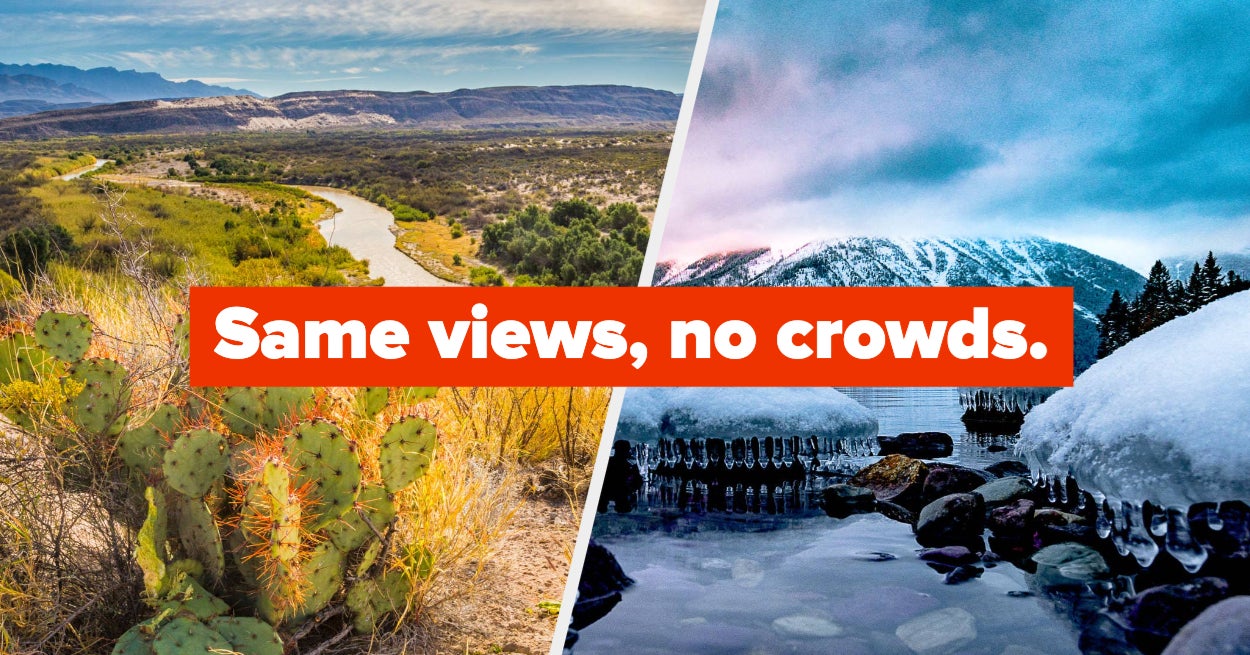
[ad_1]
The coronavirus pandemic is still impacting travel, and destinations around the world have different COVID-19 restrictions in place. Always check and adhere to local government policies, and use our content to dream about a future trip.
Everyone heads to national parks in the summer, but during the cooler months, the views are just as pretty, and you don’t have to worry about someone photobombing your pics.
View this photo on Instagram
http://@maza.travel / Via instagram.com
In 2019, US national parks were visited over 327 million times, and at most destinations, the majority of people went during the summer months. But guess what — a lot of parks are open year-round, meaning you can get those same spectacular views without sharing the trail with thousands of other people or sitting in traffic during your vacation.
But before you head out, make sure you’re prepared for the elements. You’ll find certain parks under a blanket of snow, which can be a total game changer.
In the winter, your hiking boots might need a little extra traction (hello Yaktrax and MICROspikes) and chances are you’ll spend at least one afternoon on snowshoes or cross-country skis. Yosemite National Park outlines some general winter safety tips which are useful at any park that sees low temperatures and snow: Tell someone where you’re going and when you plan to get back, bring more layers than you think you’ll need, and pack extra water and high-calorie snacks.
These are a few national parks that are just as spectacular (if not more) in the winter:
1.
Rocky Mountain National Park — Colorado
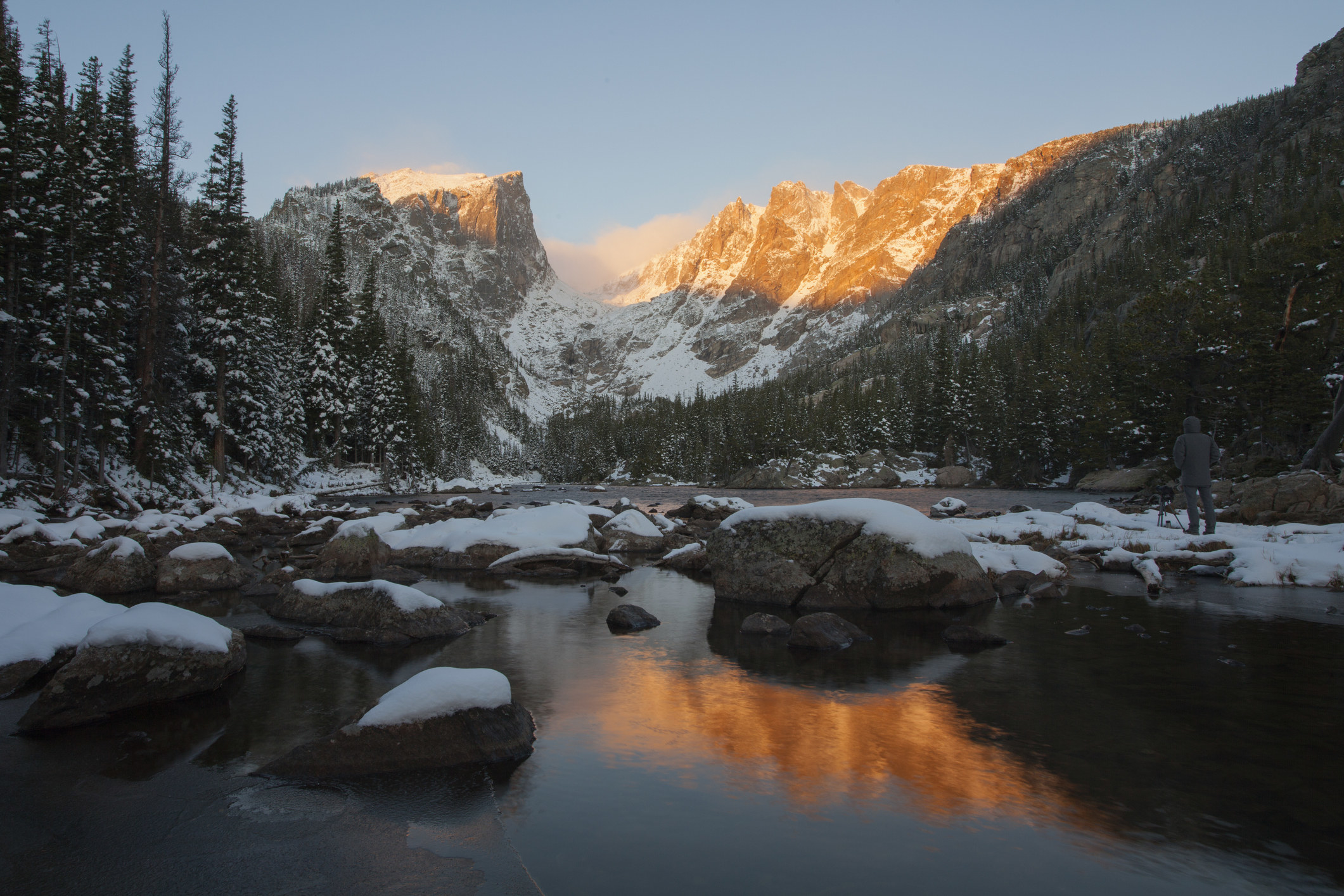
Lightvision, Llc / Getty Images
Rocky Mountain National Park is just one and a half hours northwest of Denver, but it feels like a world away. And, as you’d expect from a park in Colorado, in the winter everything is often covered by a sparkly layer of snow. Trade in your hiking boots for snowshoes or cross-country skis and get ready for some killer Rocky Mountain views. If you’re not up for exploring on foot, check the status of the park’s iconic Trail Ridge Road, which often remains partially open through the winter season.
2.
Big Bend National Park — Texas
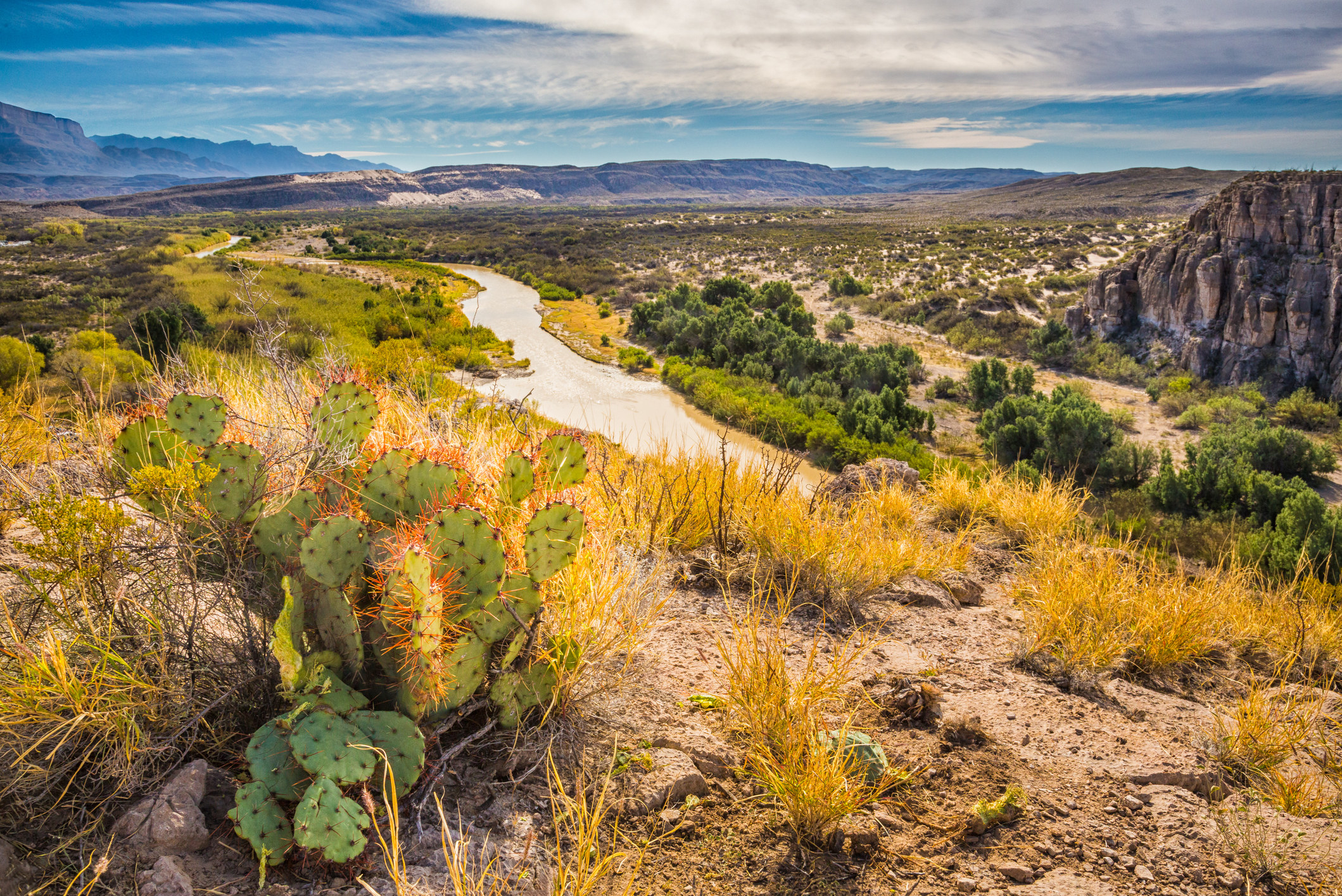
Photography By Deb Snelson / Getty Images
If you have your heart set on a warm but not hot destination, a winter visit to Big Bend National Park is the way to go. In the winter months, the temperature drops from its summertime high in the low-90s to a significantly more enjoyable temp of 61 to 67 degrees. And because snow is a rarity at Big Bend, you don’t have to worry about icy roads on your scenic drive (or freezing your buns off during that scenic hike).
3.
Zion National Park — Utah

Pabradyphoto / Getty Images
Chances are you’ve seen this park’s main sites on Instagram — the fin of Angel’s Landing, the picturesque Big Bend, and the Narrows, a canyon surrounded by thousand-foot-tall rock walls. While it never gets thaaaat cold in the winter, a little snow should be a welcome bonus — it makes the park’s red Mars-like rock pop and keeps the crowds away. Just make sure to bring plenty of layers.
Check out: 22 Places In Utah That Are So Beautiful, I Can’t Believe They’re Even Real
4.
Yosemite National Park — California
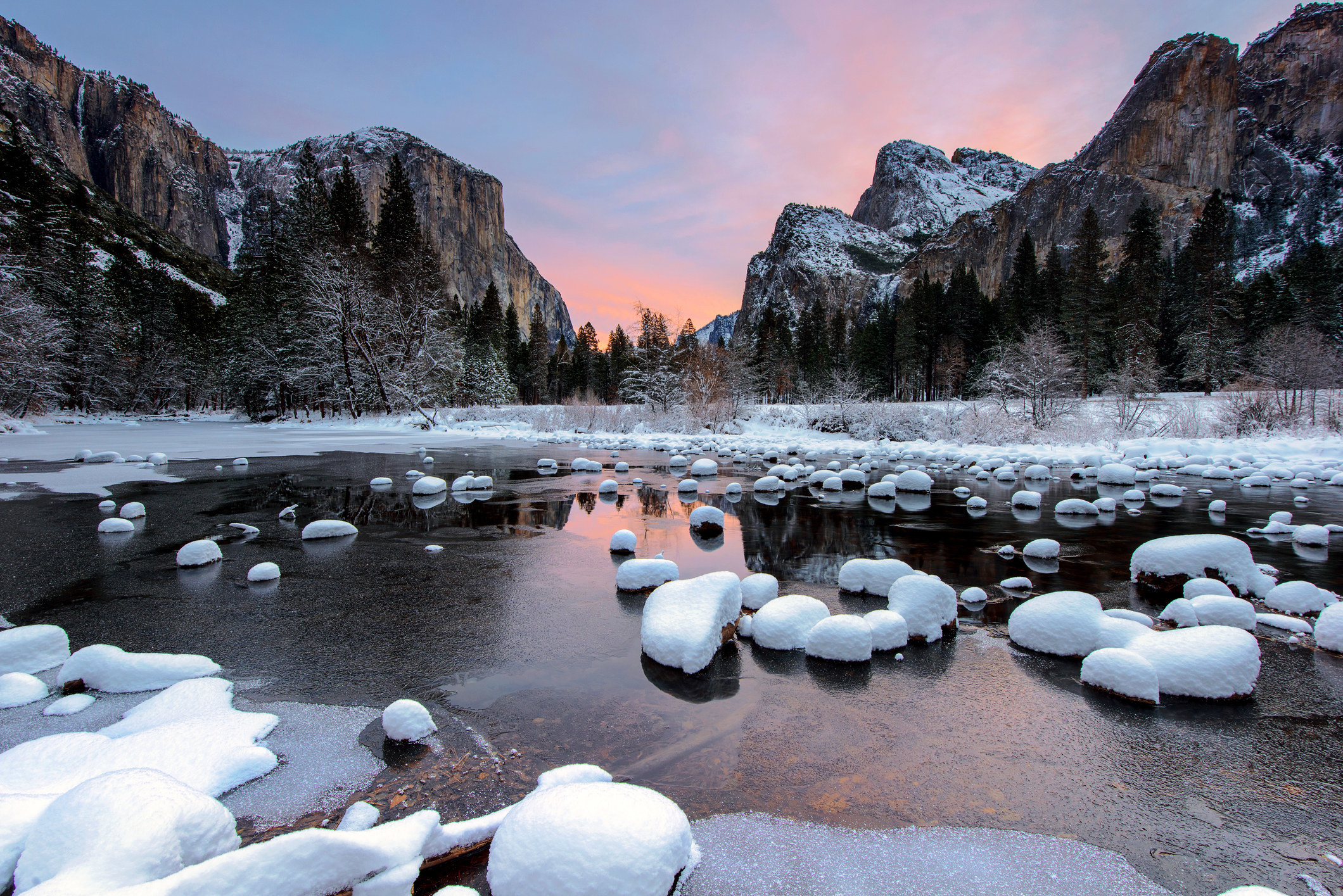
Piriya Photography / Getty Images
You’ve seen photos of El Capitan and Half Dome, but these granite monoliths are sooo much better in person. And while the park is open year-round, 77% of visitors come from May to October — which means the winter months are wonderfully quiet and crowd-free. Certain roads are closed — like the popular Tioga Road — but Yosemite Valley and Wawona are usually car-accessible all year and provide access to winter hiking. If you’re a seasoned adventurer and have your own skis or snowshoes (or can borrow a pair), drive to Badger Pass and head out on a self-led winter trek — just make sure you’re truly prepared (read up on Yosemite’s winter safety tips here).
Check out: 8 Things I Wish I Knew Before Visiting Yosemite National Park
5.
Glacier National Park — Montana
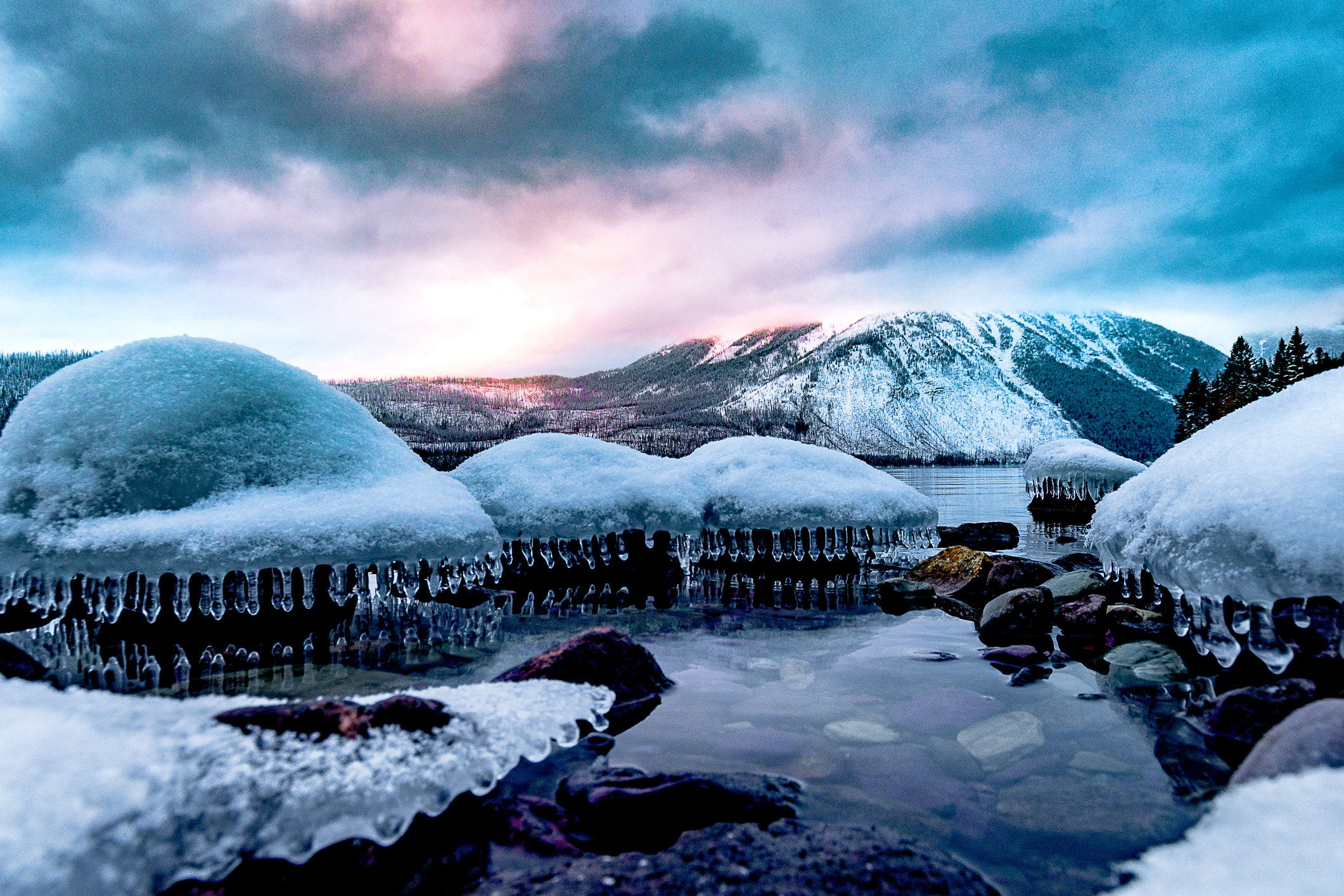
Hartmanc10 / Getty Images
Winter in Montana shouldn’t be taken lightly — expect snow, icy roads, and freezing temperatures — but it results in a near-vacant park experience (say hello to tourist-free snaps!), wildlife (howdy, white-tailed deer!), and continued access to the scenic Going-to-the-Sun Road (well, at least part of it). If you’ve got the gear (and the know-how), pack along your cross-country skis or snowshoes so you can continue on the section of the Going-to-the-Sun Road that’s closed to cars.
6.
Everglades National Park — Florida
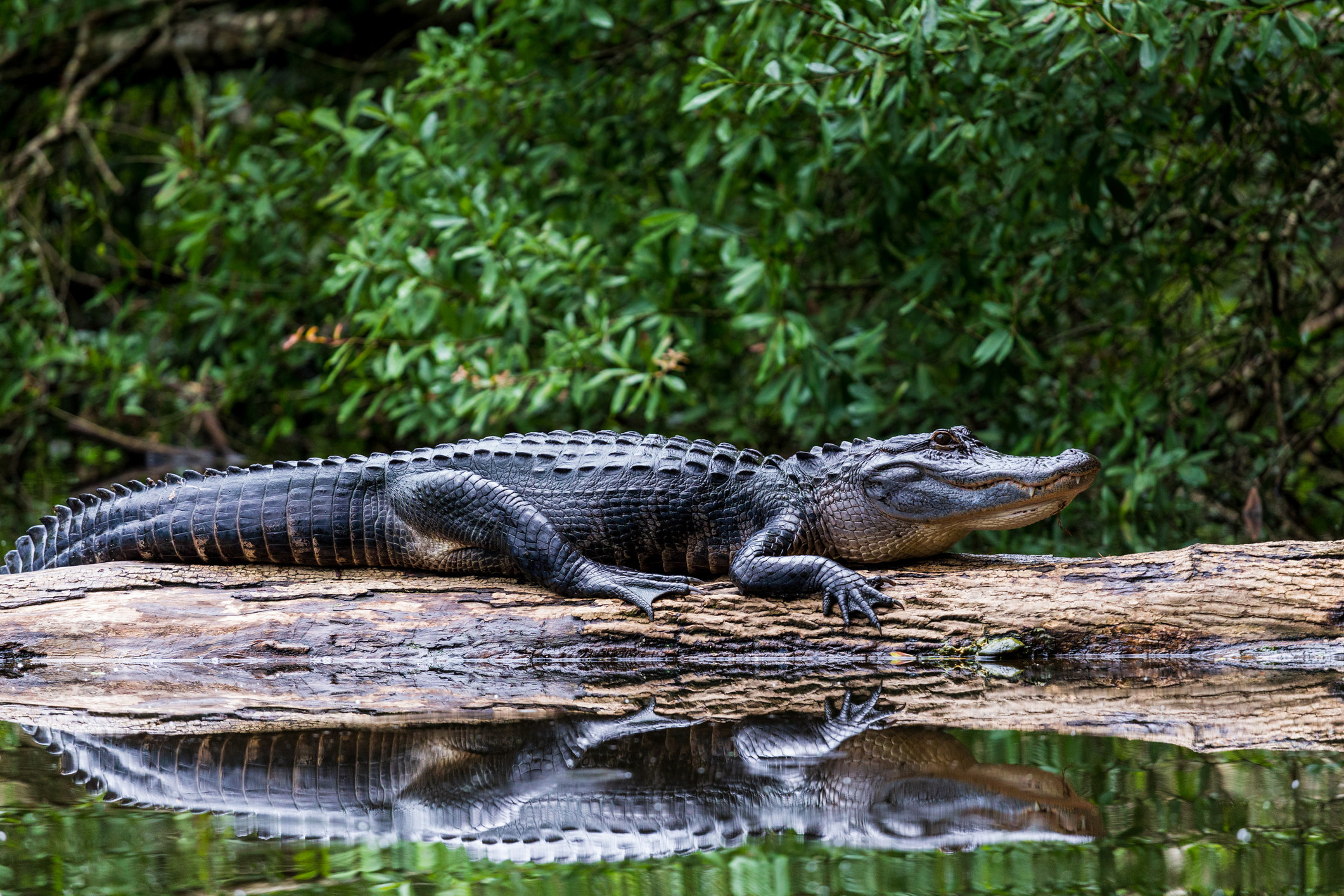
Joe Pearl Photography / Getty Images
Everglades National Park is a special place — it’s the largest subtropical wilderness in the US and houses rare species like the Florida panther, American alligator, and the doughy manatee. And, perhaps most importantly to some travelers, it’s warm and temperate year-round. The dry season in the Everglades runs November through April, so you can expect mild and pleasant temperatures even in the dead of winter. Plus, as water levels drop, animals tend to congregate around watering holes, which can make wildlife spotting wonderfully easy.
7.
Grand Canyon National Park — Arizona
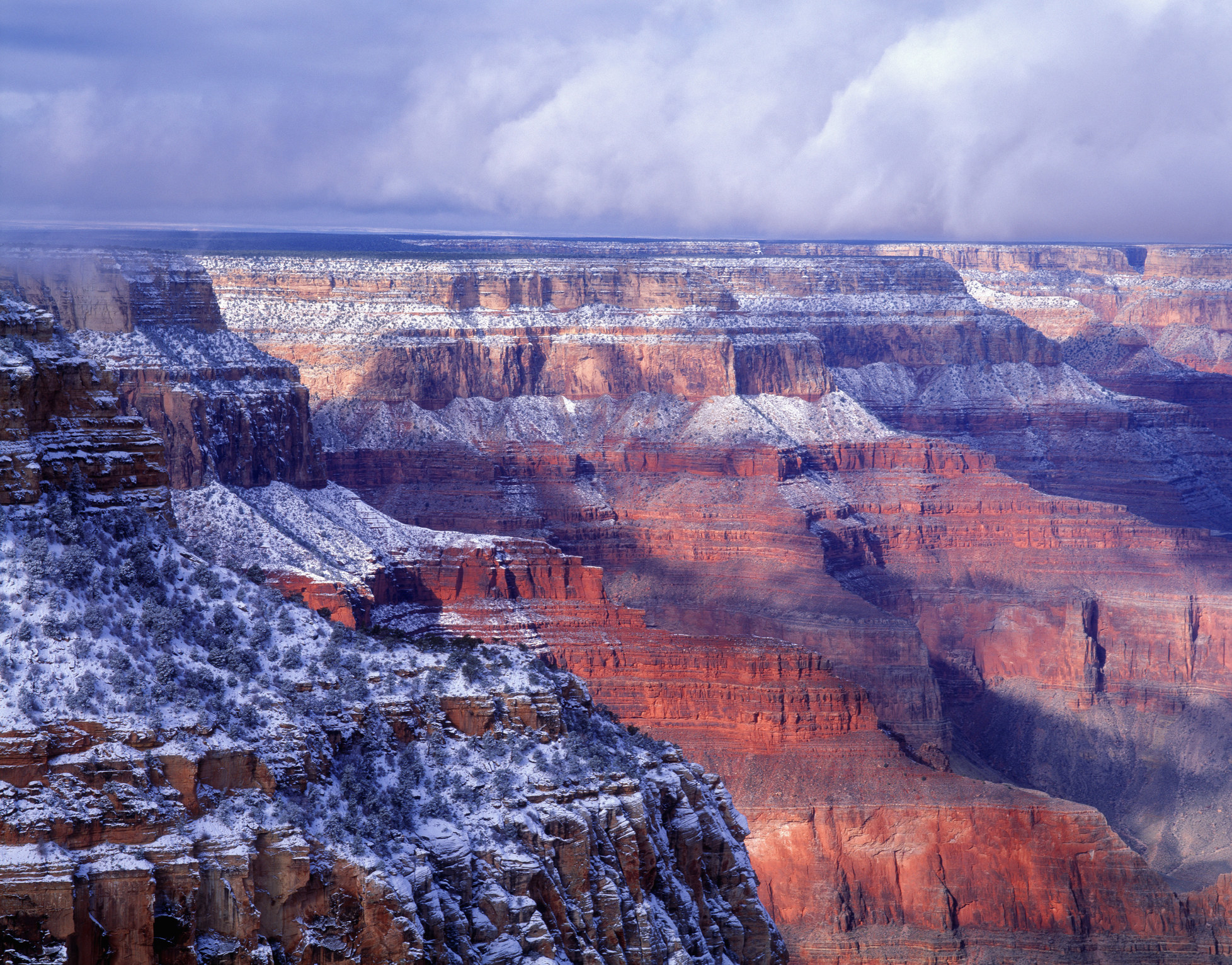
Robert Glusic / Getty Images
A visit to the Grand Canyon ranks high on many bucket lists, but in reality, a visit during the park’s high season just means congested roads and busy hiking trails. In the winter, the temperatures drop (and snow and ice are regulars) but it’ll feel like you have the park all to yourself. Head to the South Rim, which is open year-round, and enjoy a mellow stroll on the Rim Trail or enjoy the tourist-free views from your car on Desert View Drive or Hermit Road.
Check out: 17 Ridonkulously Beautiful Places In Arizona You’ve Gotta See To Believe
8.
Death Valley National Park — California & Nevada
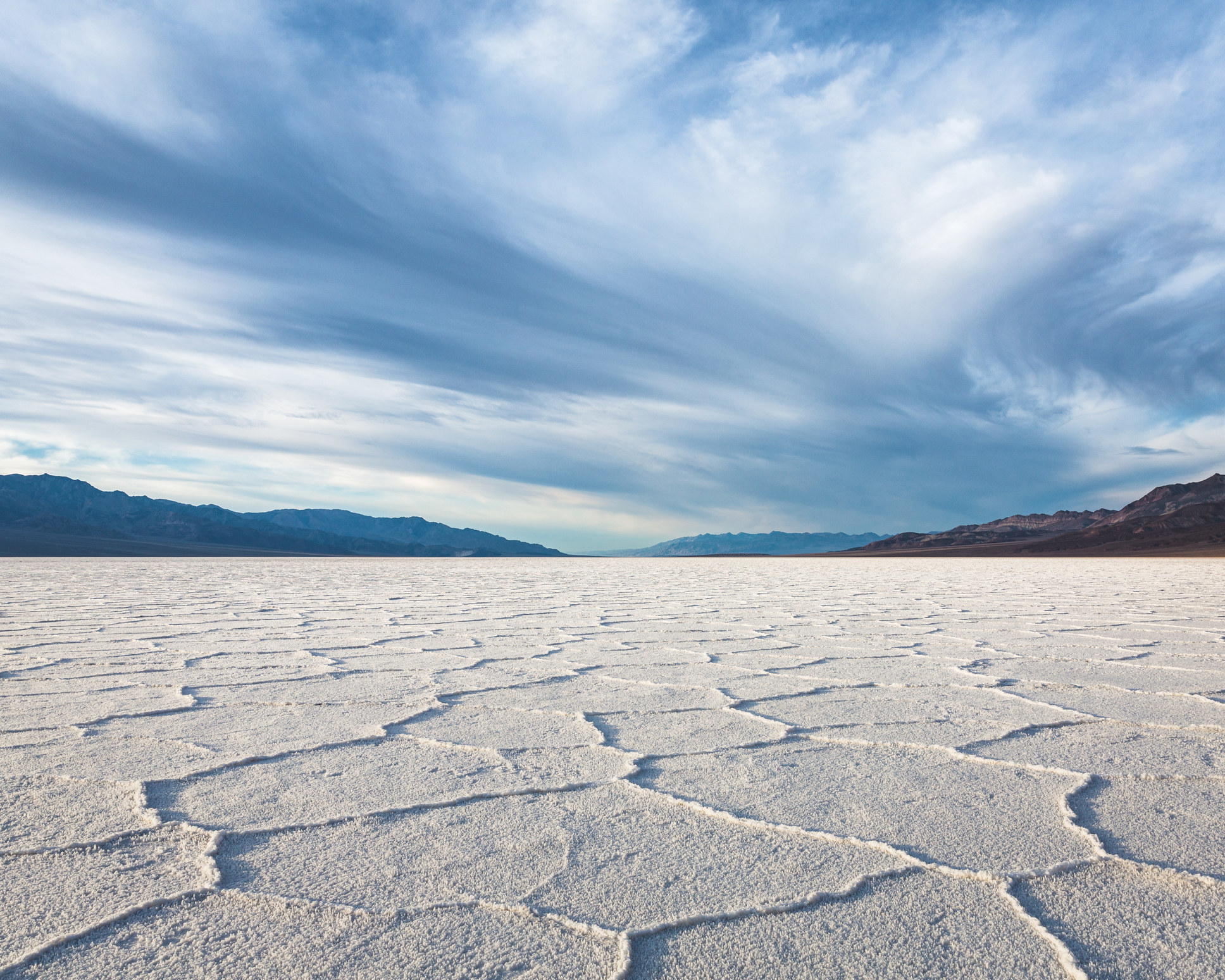
Michaelschober / Getty Images
It doesn’t take a genius to figure out that the perfect time to visit one of the hottest places on Earth is in the winter. Death Valley National Park may be known for its summer heat (134 degrees Fahrenheit was recorded in 1913), but in the winter, don’t be surprised to see snow blanketing the park’s peaks. Take Badwater Road to Badwater Basin to experience life at the lowest elevation in North America (282 feet below sea level). From here, a short hike will bring you to the Moon-like salt flats.
9.
Arches National Park — Utah
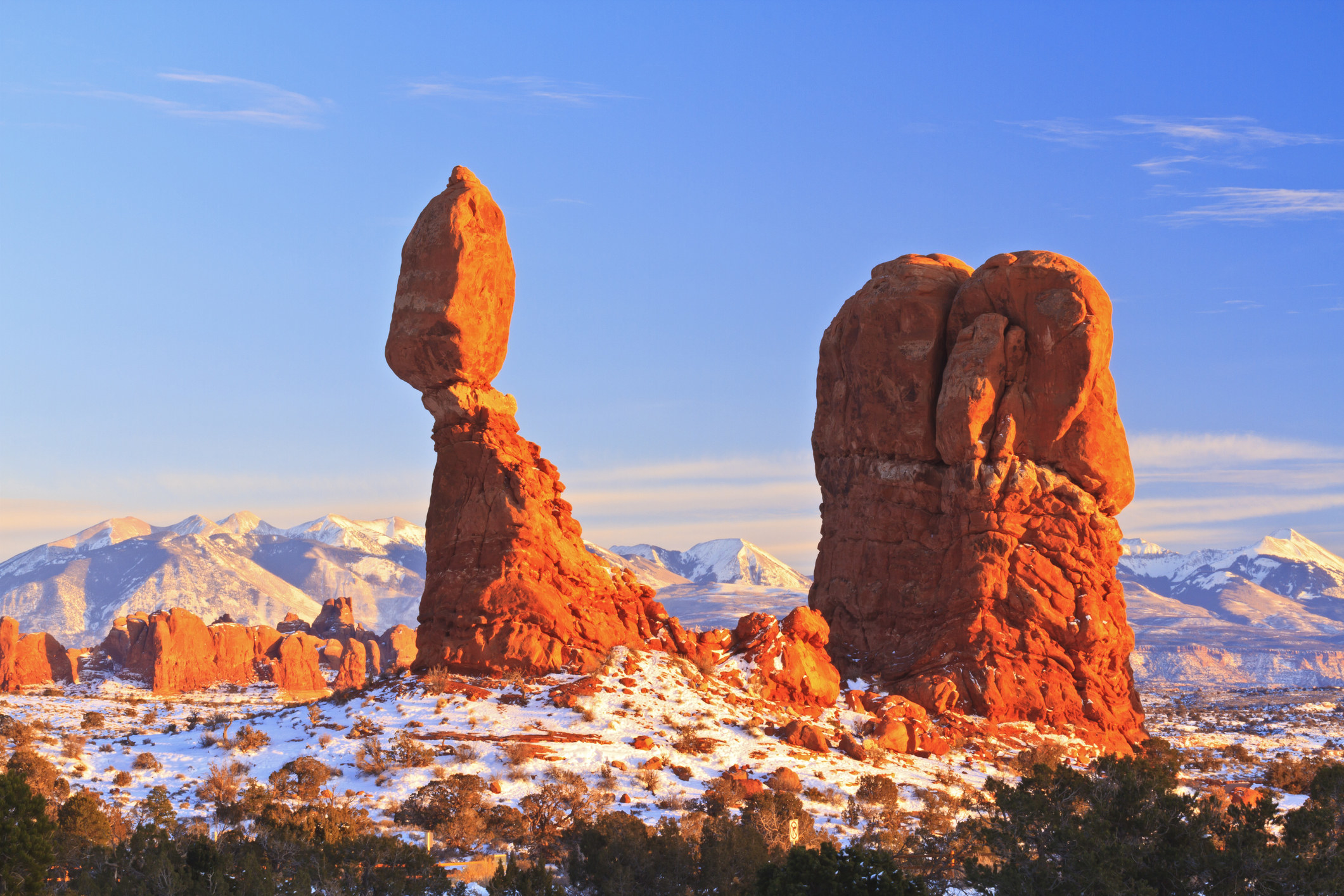
Lightphoto / Getty Images
The Arches National Park website describes the terrain as “a landscape of contrasting colors” — and it only becomes more true in the winter, when white snow makes the red rocks and blue skies pop. Pack an extra jacket, hiking poles, extra traction for your hiking shoes (Yaktrax or MICROspikes will help a lot), and plenty of water and sunscreen to explore this popular park during its quiet winter season. I promise, the natural stone arches, towering pinnacles, and giant rock fins are just as jaw-dropping (if not more so) in the winter.
10.
Mount Rainier National Park — Washington
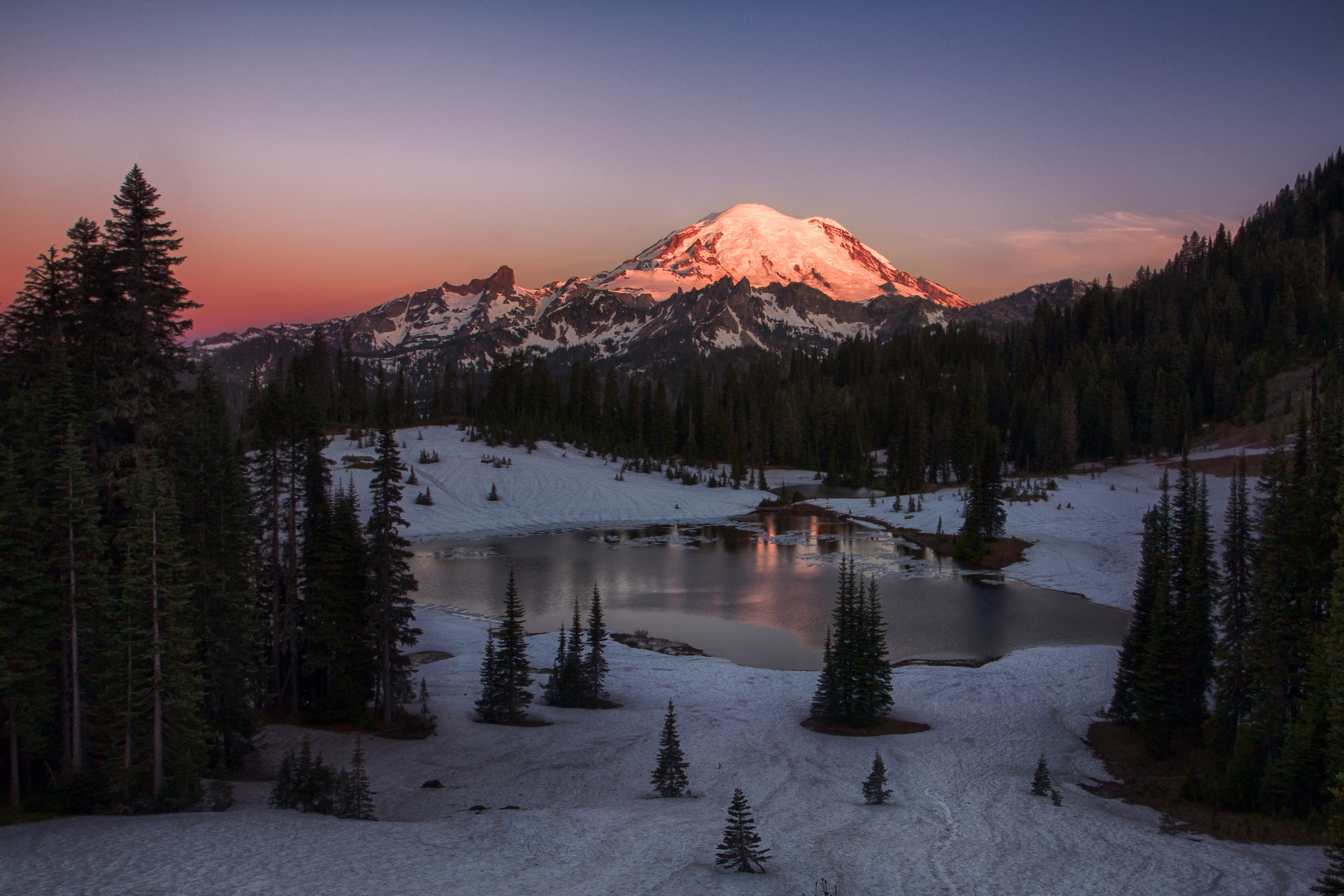
Strekoza2 / Getty Images
The crown jewel of Mount Rainier National Park is Mount Rainier (duh), an active volcano and glaciated peak that sits at 14,410 feet above sea level. And while the mountain views are nice, the real clincher is the winter snowfall; the Paradise area of the park got an average of 53 feet of snow last year, enhancing the park’s winter activities — sledding, skiing, snowboarding, snowshoeing — with a fluffy shroud of sparkly snow.
11.
Bryce Canyon National Park — Utah
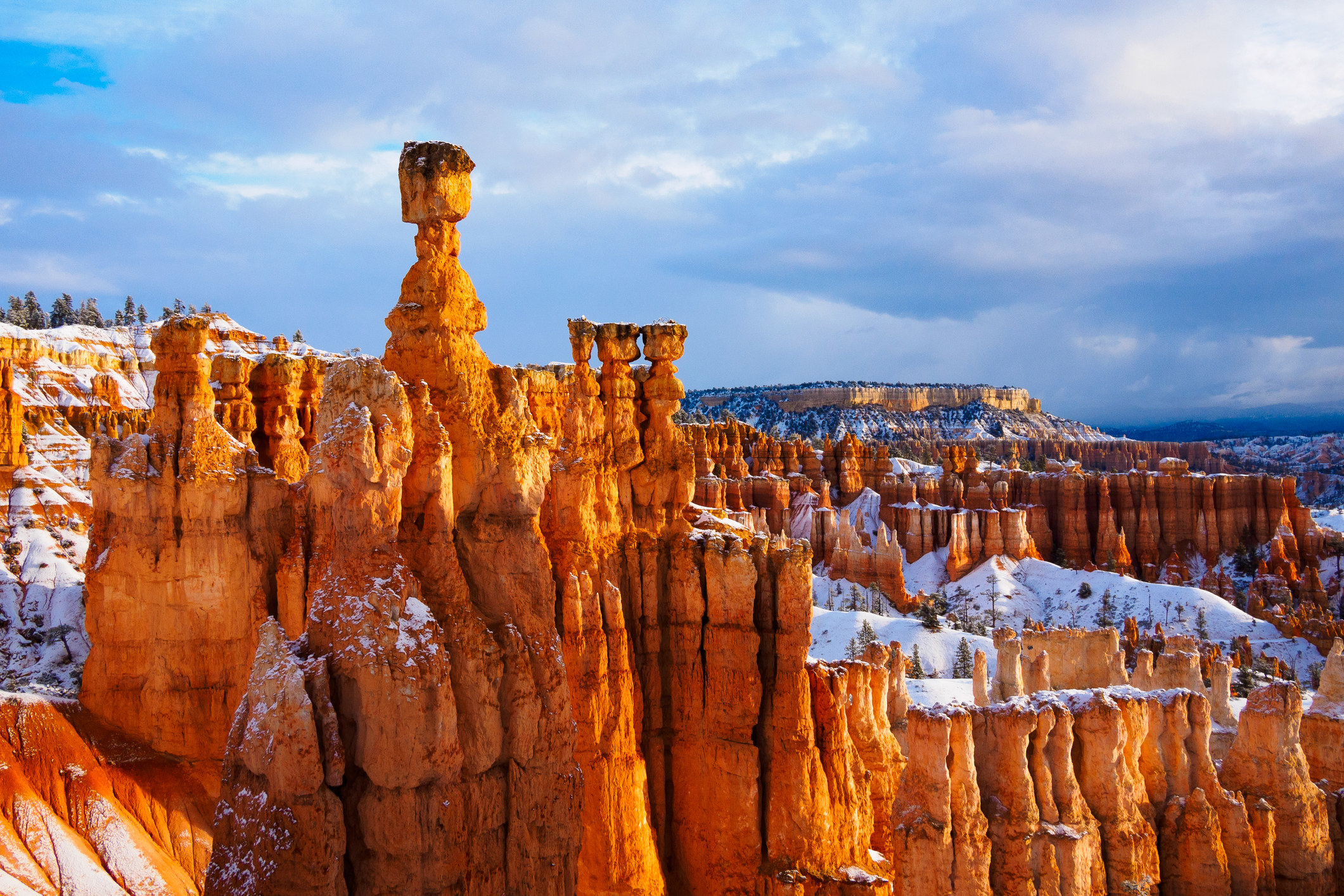
Teps4545 / Getty Images
The park’s hoodoos — irregular columns of rock — are even more photogenic in the winter months, when a dash of snow or ice brings additional contrast to the oddly shaped rock formations. Strap a traction device to your hiking boots or clip into a pair of cross-country skis or snowshoes for wintertime access to the park’s trails. And, make sure to leave time for a visit to Bryce Amphitheater, a hoodoo-filled area below the Rim Trail hiking path.
12.
Denali National Park & Preserve — Alaska
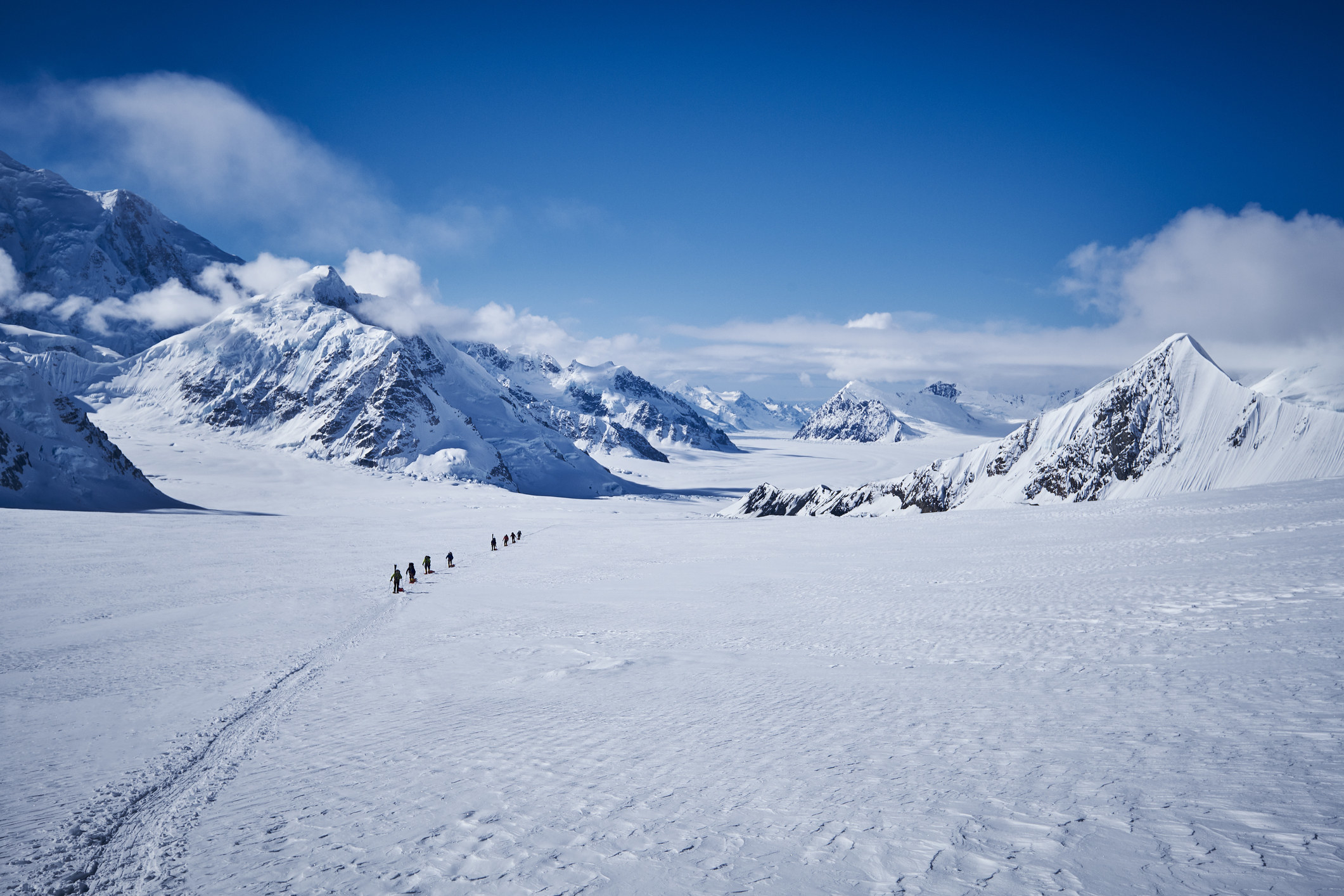
1111iespdj / Getty Images
Spanning 6 million acres of Alaska wilderness, Denali National Park & Preserve is as stunning as it is vast. The highest peak in North America, Denali at 20,310 feet, is the centerpiece to a land that’s marked by glaciers and tundra, where grizzly bears and caribou roam. And while winter visitors will need to be prepared for short days and harsh temperatures, one glimpse of the aurora borealis makes the cold and darkness worth it. During the day, take a ranger-led snowshoe walk, hop on a winter-ready fat tire bike, and bring along a thermos of hot chocolate (you won’t regret it).
13.
Acadia National Park — Maine
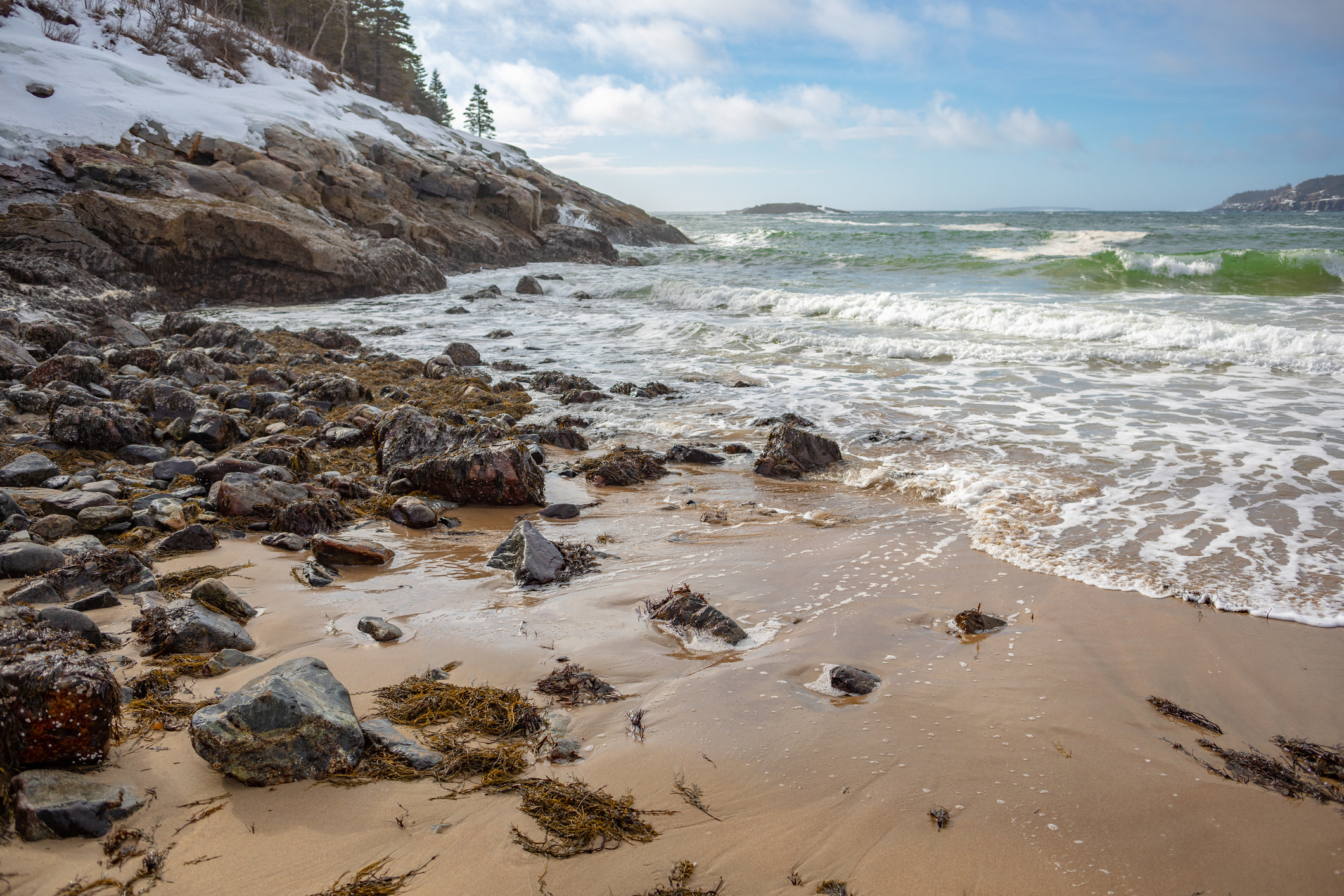
Morgainbailey / Getty Images
Most people don’t consider venturing to Maine in the middle of winter, and that’s exactly why a winter visit should be on your bucket list. In the colder months, this practically vacant park provides travelers with solitude, scenic oceanside drives (check out the aptly named Ocean Drive), and plenty of trails that support travel on snow — snowshoes, skis, and snowmobile.
14.
Great Smoky Mountains National Park — North Carolina & Tennessee
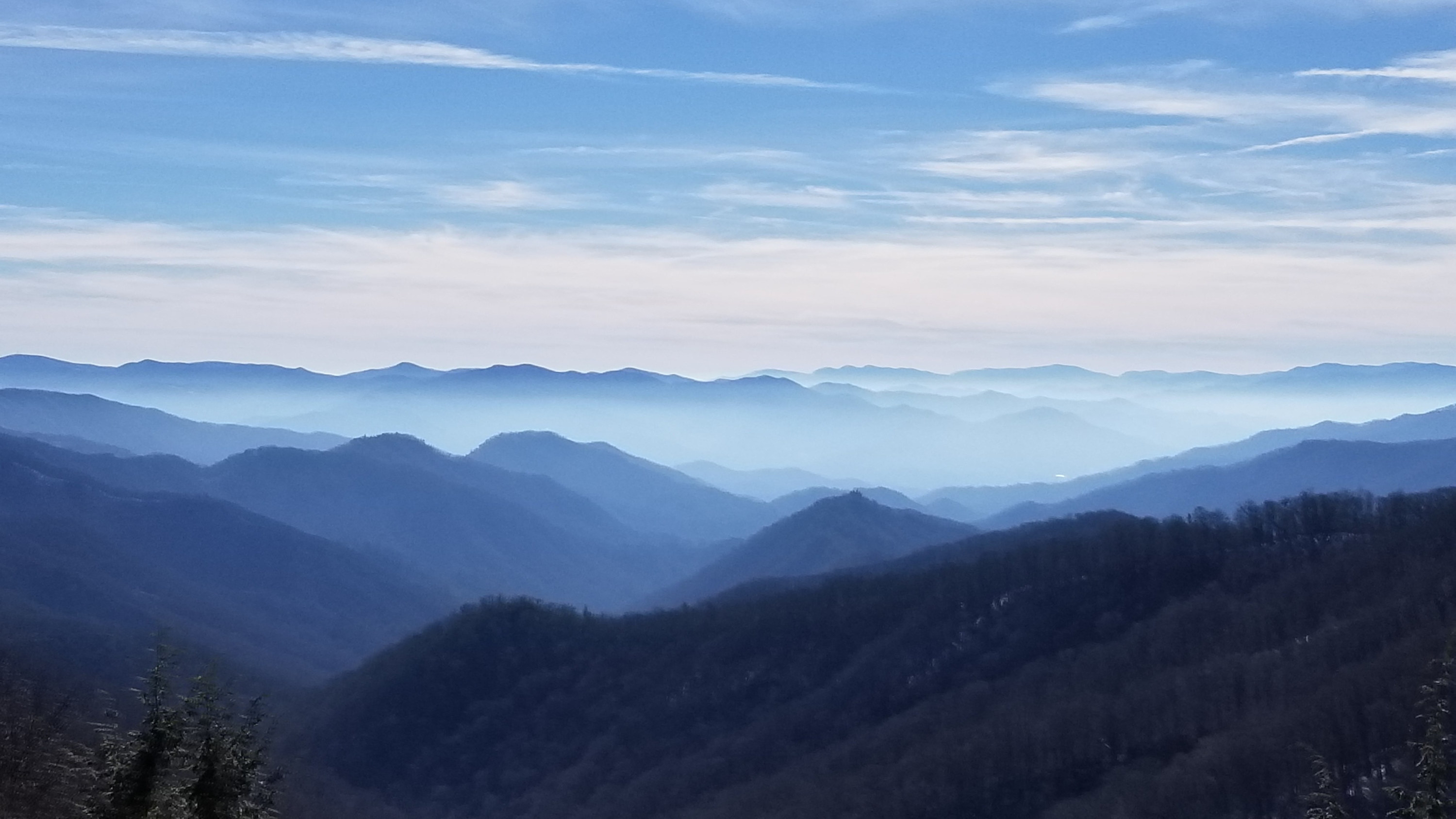
Basilpics / Getty Images
The fall colors may get all the attention at Great Smoky Mountains National Park, but the moderate winters make this park a perfect place to visit when the temperature drops. In areas of low elevation, wildflowers may still be blooming, while snow on the mountains is not uncommon in January and February. Typically, the park’s primary roads remain open year-round, and you can still hike a segment of the Appalachian Trail in the dead of winter.
15.
Joshua Tree National Park — California
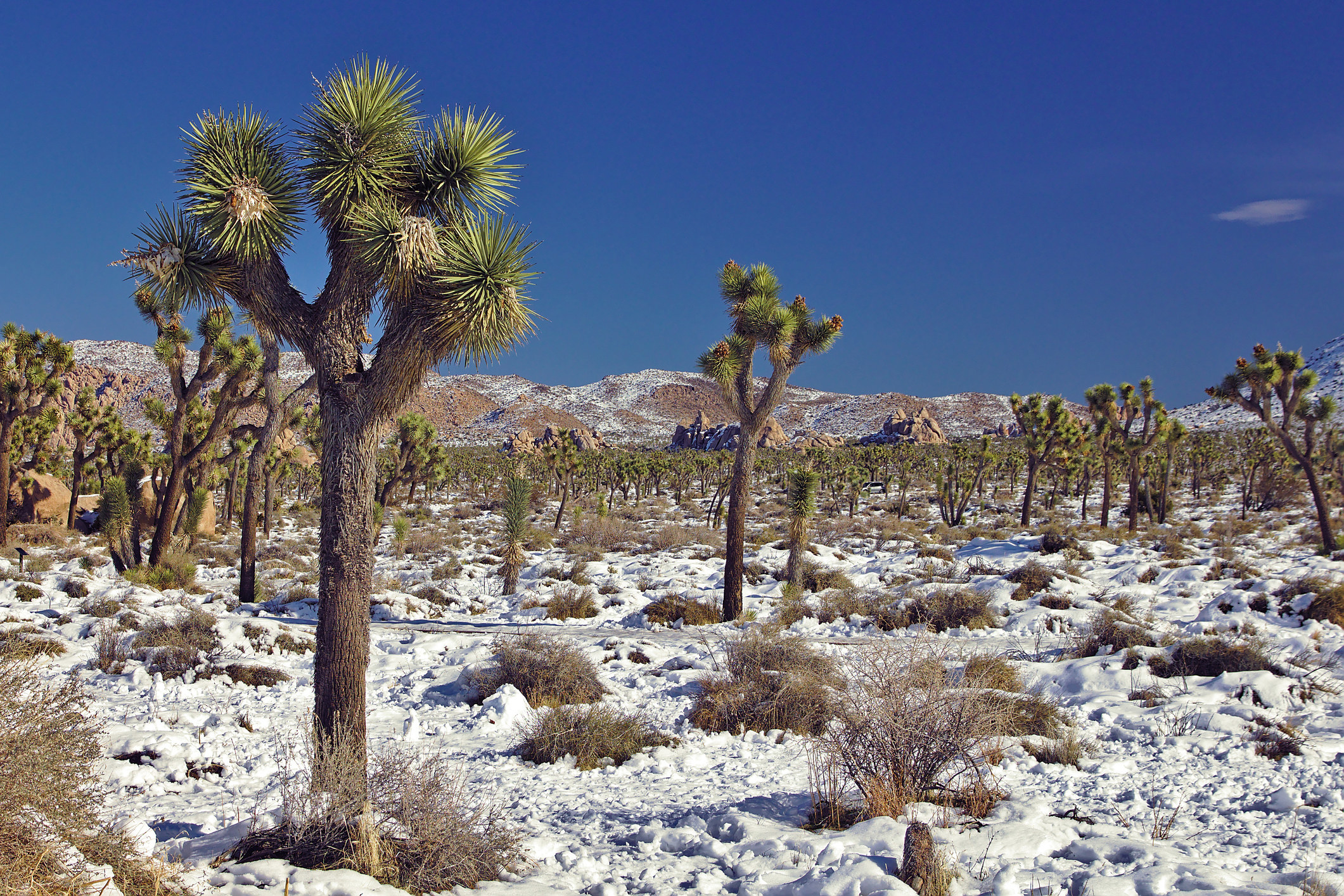
Jaromir Vanek / Getty Images
In the summer, Joshua Tree can be uncomfortably hot, but in the winter, those sweltering 100-degree days become a comfortable 60-degrees. However, those cooler temperatures won’t limit the amount of desert terrain available to explore — you can drive the park’s backcountry roads, cruise around by bike, or plan out a scenic hike amongst the Joshua trees and cacti.
Check out: 19 Stunning Places In California That Prove It’s Still The Most Incredible State
Don’t forget to check out Bring Me! for all of BuzzFeed’s best travel tips and hacks, vacation inspiration, and more!

Jay Fleckenstein / BuzzFeed
[ad_2]
Source link





